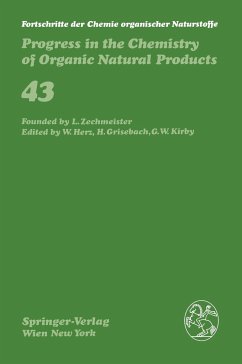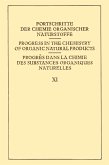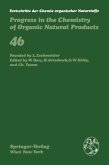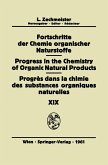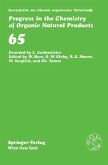Naturally Occurring Isoflavonoids (1855¿1981).- I. Introduction.- II. Distribution.- III. Biological Activity and Uses.- Table 1. Minor Properties and Uses of Some Isoflavonoid Compounds.- IV. Introduction to Tables 2, 3 and 4.- Acknowledgements.- Table 2. Naturally Occurring Isoflavonoid Aglycones.- A. Isoflavones.- a) Simple 5-Deoxy Isoflavones.- b) Complex 5-Deoxy Isoflavones.- c) Simple 5-Oxy Isoflavones.- d) Complex 5-Oxy Isoflavones.- e) Chloro Isoflavones.- B. Isoflavonequinone.- C. Coumaranochromones.- D. Isoflavanones.- a) Simple 5-Deoxy Isoflavanones.- b) Complex 5-Deoxy Isoflavanones.- c) Simple 5-Oxy Isoflavanones.- d) Complex 5-Oxy Isoflavanones.- E. Rotenoids.- a) Simple 12a-Deoxy Rotenoids.- b) Complex 12a-Deoxy Rotenoids.- c) Simple 12a-Oxy Rotenoids.- d) Complex 12a-Oxy Rotenoids.- F. Dehydrorotenoids.- a) Simple Dehydrorotenoids.- b) Complex Dehydrorotenoids.- G. Pterocarpans.- a) Simple 6a-Deoxy Pterocarpans.- b) Complex 6a-Deoxy Pterocarpans.- c) Simple 6a-Oxy Pterocarpans.- d) Complex 6a-Oxy Pterocarpans.- H. Pterocarpanones.- a) Simple Pterocarpanones.- b) Complex Pterocarpanones.- I. Pterocarpenes.- a) Simple Pterocarpenes.- b) Complex Pterocarpenes.- J. Pterocarpenequinones.- K. Isoflavans.- a) Simple Isoflavans.- b) Complex Isoflavans.- c) Isoflavan Dimer.- L. Isoflavanol.- M. Isoflavanquinones.- N. Isoflavenes.- a) Simple Isoflavenes.- b) Complex Isoflavenes.- O. Coumestans.- a) Simple Coumestans.- b) Complex Coumestans.- P. 3-Arylcoumarins.- a) Simple 4-Deoxy 3-Arylcoumarins.- b) Complex 4-Deoxy 3-Arylcoumarins.- c) Simple 4-Oxy 3-Arylcoumarin.- d) Complex 4-Oxy 3-Arylcoumarins.- Q. ?-Methyldeoxybenzoins.- a) Simple ?-Methyldeoxybenzoins.- b) Complex ?-Methyldeoxybenzoins.- R. 2-Arylbenzofurans of Leguminous Origin.- a) Simple 2-Arylbenzofurans.- b) Complex 2-Arylbenzofurans.- S. 2-Arylbenzofuranquinone.- Table 3. Naturally Occurring Isoflavonoid Glycosides.- A. Isoflavone Glycosides.- B. Isoflavanone Glycosides.- C. Rotenoid Glycosides.- D. Pterocarpan Glycosides.- E. Coumestan Glycosides.- F. Deoxybenzoin Glycoside.- Table 4. Partially Identified Isoflavonoids, and Some Substances Possibly of an Isoflavonoid Nature Found in the Family Leguminosae.- Molecular Weight Index.- Trivial Name Index.- Source Index.- References.- Note Added in Proof.- The Sarpagine-Ajmaline Group of Indole Alkaloids.- 1. Introduction.- 2. Skeletal Types.- 2.1. Sarpagine Type Alkaloids.- 2.1.1. Polyneuridine Subgroup.- 2.1.2. Akuammidine Subgroup.- 2.1.3. Voamonine-Voacoline.- 2.1.4. Talpinine.- 2.1.5. Vomifoline Subgroup.- 2.2. Ajmaline Type Alkaloids.- 2.2.1. Perakine Subgroup.- 2.2.2. Quebrachidine Subgroup.- 2.2.3. Indolenine Subgroup.- 2.2.4. Tetraphyllicine Subgroup.- 2.2.5. 17-Keto Alkaloids.- 2.2.6. Ajmaline Subgroup.- 2.3. Bisindole Alkaloids.- 3. Occurrence.- 4. Biogenesis.- 4.1. Barger-Hahn-Robinson Theory.- 4.2. Wenkert-Bringi Hypothesis.- 4.3. Thomas-Wenkert Hypothesis.- 4.4. Leete¿s Postulate.- 4.5. Battersby¿s Observations.- 4.6. Mevalonoid Origin of the Non-Tryptophan Unit.- 4.7. Van Tamelen¿s Theory.- 4.8. St¿ckigt¿s Work.- 4.9. Court¿s Observations.- Interlude: Enzymic Transformations.- 4.10. The Concise Biogenetic Representation.- 4.10.1. Sarpagine Group.- 4.10.2. Ajmaline Group.- 4.10.3. Bisindole Alkaloids.- 5. Chemistry.- 5.1. Conversion of Normacusine B to Macroline.- 5.2. Photochemistry.- 6. Syntheses.- 6.1. Total Syntheses of Ajmaline.- 6.1.1. Masamune Synthesis.- 6.1.2. Mashimo and Sato Synthesis.- 6.1.3. The Biogenetic-Type Synthesis of van Tamelen and Olivier.- 6.2. Partial Synthesis of Talpinine.- 6.3. Synthesis of the Ring Skeleton.- 6.4. Bisindole Alkaloids.- 7. Spectroscopy.- 7.1. Carbon-13 NMR Spectroscopy.- 7.1.1. Sarpagine Group.- 7.1.2. Ajmaline Group.- 7.2. Mass Spectrometry.- 7.2.1. Sarpagine Group.- 7.2.2. Ajmaline Group.- 8. Pharmacology.- References.- Author Index.
Hinweis: Dieser Artikel kann nur an eine deutsche Lieferadresse ausgeliefert werden.
Hinweis: Dieser Artikel kann nur an eine deutsche Lieferadresse ausgeliefert werden.

